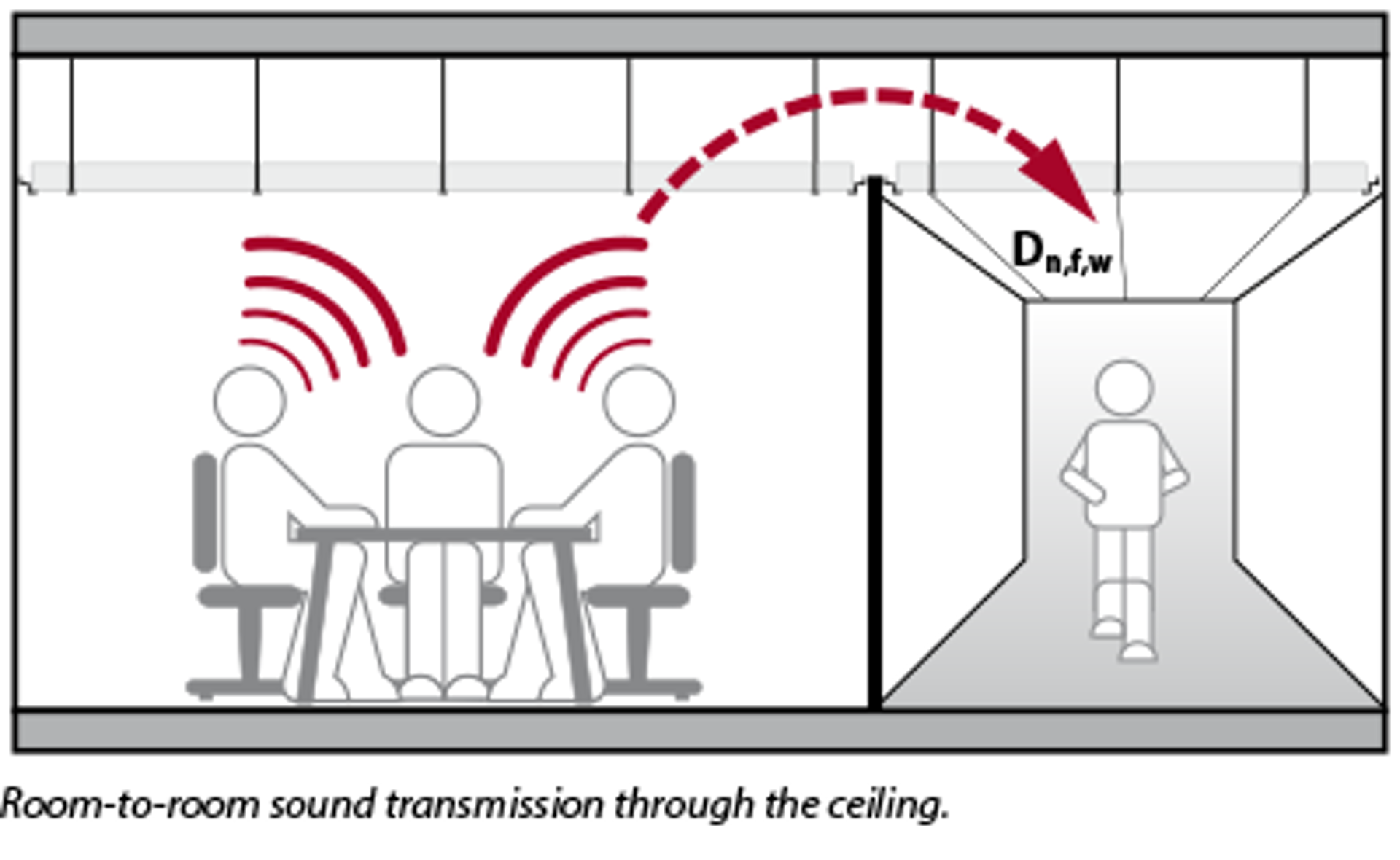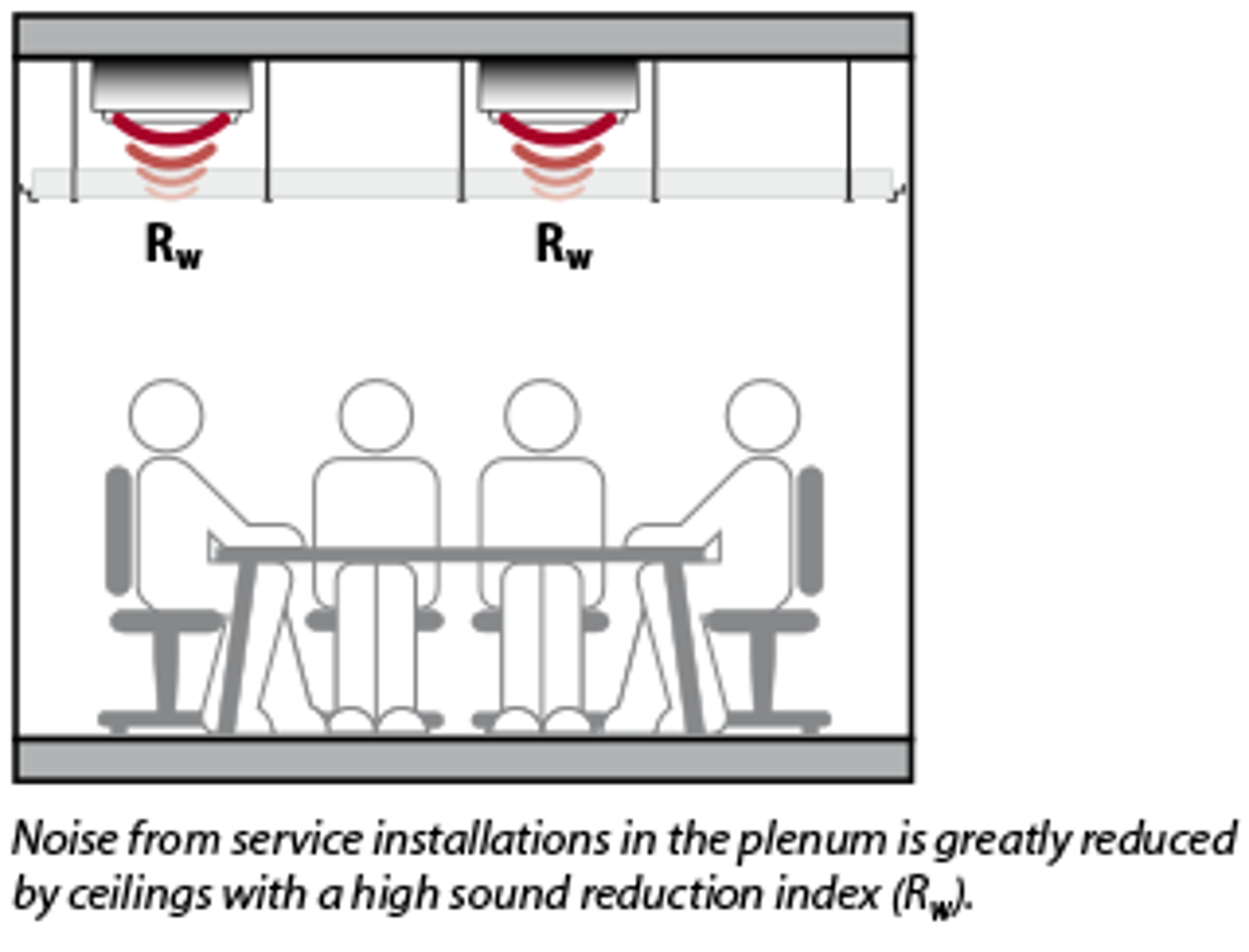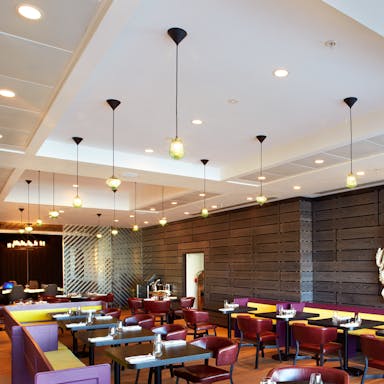Room-to-room sound insulation
The Dn,f,w value in dB quantifies the longitudinal sound insulation provided by the ceiling between two rooms. The higher the Dn,f,w value, the better the room-to-room sound insulation. The Dn,f,w value can be considered equal to the previously-used Dn,c,w value.
Dn,f,w is used by acousticians to predict the total sound insulation DnT,w (R’w; DnT,A) between adjacent spaces.

Direct sound insulation
The direct sound insulation in dB indicated by the sound reduction index (Rw) measures the reduction of sound passing through the suspended ceiling.
Ceilings with high sound reduction index Rw will help prevent noise generated by installations in the plenum from entering the room.

C & Ctr values
To rate the impact of sound insulation in specific conditions, laboratories report Dn,f,w or Rw indicating C and Ctr values. C is the adaptation term for “pink” noise such as speech, music, TV, children playing, etc. Ctr is the adaptation term for traffic noise. The lower the C and Ctr values, the better.

